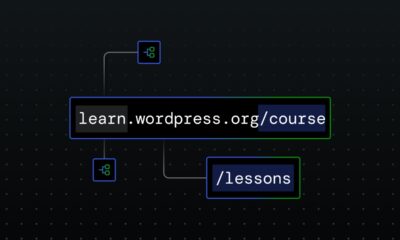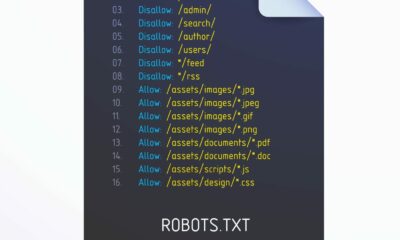MARKETING
A Marketer’s Guide To Video Codecs
Streaming is ubiquitous. From from services like Netflix to user-generated content on YouTube, we’re all streaming video online. As customers are consuming more video content, video marketing has become an integral part of marketing strategies. All of this is made possible by codecs.
We’ll explain what codecs are, why you need them, and how they make streaming high quality content possible.
What is a codec?
A codec is a term used to describe a computer program that can encode and decode data. Their main purpose is to compress data, particularly media. Without them, audio and video files would be too large to transfer over the internet.
A combination of “encoder” and “decoder,” a codec is used to encode data into a format that can be stored or transmitted and viewed later with its corresponding decoder. Essentially you won’t be able to play audio or video files unless they are paired with their corresponding decoder.
What is a video codec?
A video codec compresses and decompresses digital video files. The software takes large video files and compresses them so they take up less space on your computer or device. A popular video codec is MPEG, which was established by the Moving Picture Experts Group. The MPEG suite of codecs is a popular choice due to its high quality video display with relatively low data rates.
Other Common Types of Codecs
1. MP3
Most of us are familiar with MP3s. This popular audio codec changed the music industry, allowing people to listen to and share music online, store it on their phones, and computers.
2. WAV
Created by IBM and Microsoft, Waveform (WAV) is an uncompressed audio format. Unlike MP3s it’s not meant for sharing audio files online since it takes up too much space. Instead WAV is best used in areas that need higher quality audio like radio, television, and editing music.
3. HEVC
High Efficiency Video Coding (HEVC) is a popular compressed video format. In fact, many phones and smart TVs already have built-in hardware to support HEVC playback. Since it doesn’t require much bandwidth, HEVC has become the go-to format for streaming. The H.264 codec is used by Vimeo and YouTube.
Lossy vs. Lossless Compression
An important distinction between codecs is whether they use lossless or lossy compression. With lossy compression, some of the visual data is left out in order to reduce the size of the video or audio data. This loss is typically minor and worth the tradeoff for the smaller size.
Media files using lossy compression are very common; an MP3 is a great example of lossy compression as they can be compressed at a number of different bitrates depending on your desired file size.
Lossless compression reduces file size by identifying redundant patterns in video or audio, which ensures no data is lost. Lossless files maintain the bit rate of the original data stream creating a large, high quality file. A WAV file is an example of a lossless audio file. Use lossless video when quality matters above all else, like a final copy of a video piece you’ve created for broadcast purposes.
Why do marketers need codecs?
Working with video is becoming a must-have skill rather than nice-to-have for marketers. While you won’t necessarily have to shoot the video content, you’ll most certainly need to share and store it.
When getting started with online video you might consider using an inexpensive camera, doing some minor edits, and posting the video on your blog or social media. As quality and production value have become more important, it is critical to understand codecs.
You’ll need to ensure you’re using the proper format to compress and share video marketing content. However, the amount of codec options can be overwhelming if you’re just getting familiar. Luckily there are codec packs, which come with a variety of codecs, that allow you to simply download the pack and go.
- K-Lite: K-Lite comes in either Basic, Standard, Full, or Mega versions. This bundle is a good choice for newbies since the Basic tier covers most video and audio formats.
- Media Player: This pack supports most video and audio formats, plus offers installation options for both novices and those who need more advanced options. It supports standard definition up to 4K.
- Wonderfox HD Video Converter Factory Pro: While this isn’t a codec pack, it’s an excellent option for most of your audio and video needs. This tool can be used for video editing in addition to converting video formats.
Why Codecs Matter
While online video is fun to watch and an important part of your inbound marketing content strategy, it does require some technical knowledge to execute well. Codecs are involved in many stages of video production and distribution, working behind the scenes to provide a better visual experience for your audience.
This article was originallypublished in February 2011 and has been updated for comprehensiveness.



















You must be logged in to post a comment Login